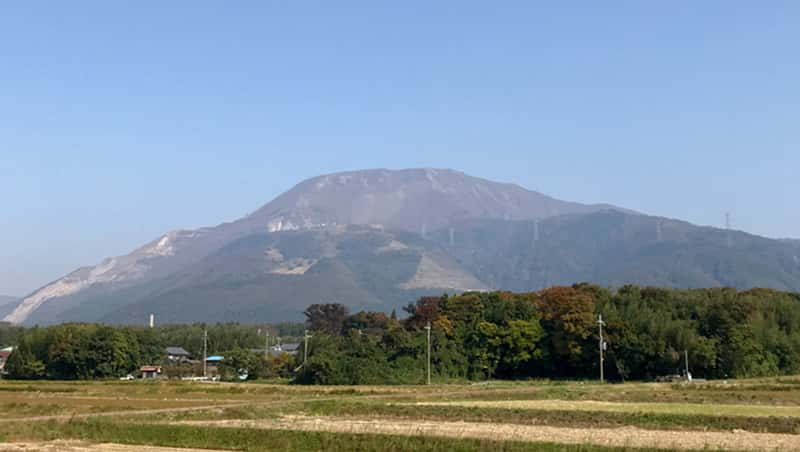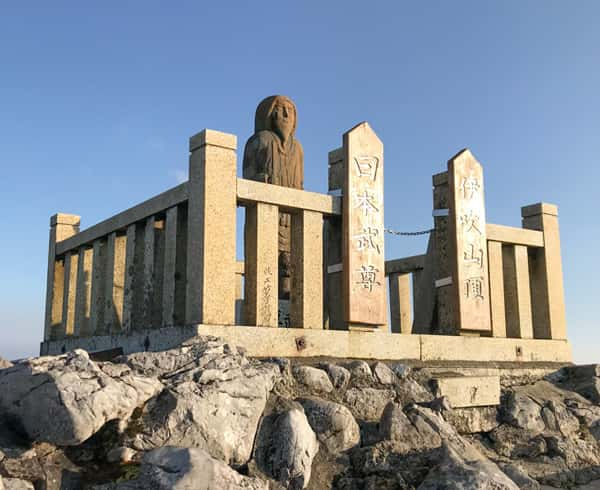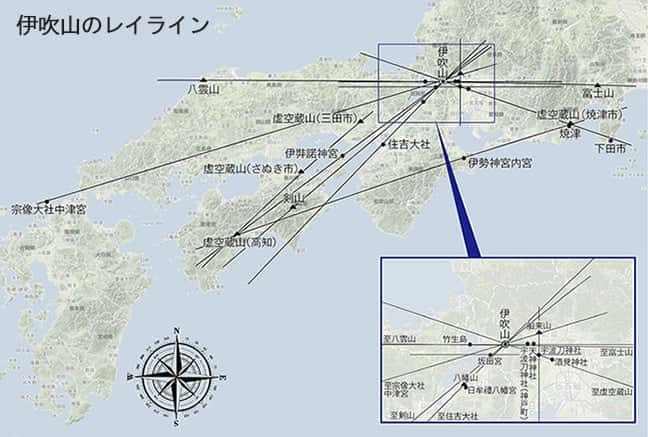Reihou Ibuki

Full view of Mt. Ibuki from a distance
As the highest peak of the Ibuki Mountains, Mt. Ibuki rises in the eastern part of Lake Biwa and is considered to be one of the “One Hundred Famous Mountains of Japan.” It is the highest peak in Shiga Prefecture at 1,377 meters above sea level. In February 1927, Mt. Ibuki accumulated 11.82 m of snow, which was the highest snowfall in recorded history and receieved the Guiness award for the highest snowfall in world history . It also had a record of 2.3 meters of snowfall per day and that is also was recognized as a world record. Although not very high in elevation, Mt. Ibuki is hit by strong winds and heavy snowfall every year that is known as “wind passing path”.
From its summit, one can see Lake Biwa, the Sea of Japan, Mount Hiei, and even the Japanese Alps in the east and for this reason, Mt. Ibuki became an object of mountain worship from the ancient days.. Of course, it can also be clearly seen from the Sea of Japan. It is assumed that the ancient people who came to Japan from western Asia were a people with advanced navigational skills, and after arriving in the Japanese archipelago, they found a waterway around Lake Biwa early on, and began to travel from the Seto Inland Sea to the Sea of Japan, and then to Ise Bay on the Pacific Ocean side, via Lake Biwa. Therefore, Mt. Ibuki, which towers over Lake Biwa, was a valuable landmark and a geographical indicator that could be seen from a distance.
Mt. Ibuki and Yamato Takeru

Statue of Yamato Takeru enshrined
at the top of Mt. IbukiSince ancient times, the deity enshrined in Mt. Ibuki has been revered as Ibuki-daimyojin, a deity that sometimes transforms into a giant white boar or a white serpent. In the Chronicles of Japan and the Kojiki (Records of Ancient Matters) state that on his way back from an expedition to the east, the Japanese warrior Yamato TakeruTakemikoto was struck down by Ibuki-daino-myojin on Mount Ibuki, and lost his life due to illness. Like Ishizuchisan, Mt. Ibuki was founded by Ennop-Ozunu Yakuzumi Kakaku. In the Heian period (794-1185), it became known as one of the seven highest mountains in the Kinki region, along with Ataogoyama, Kabusen, and Kinpusan and Katsuragisan. Later, in the mid-9th century, the four major temples of Ibukisan were founded, and today, the summit main hall of Ibukiysannjiama-dera was built at the top.
The ley line of Mt. Ibuki is based on a line at approximately the same latitude as Yakumoyama in Izumo, where Susanoo was active. On that line also lies Chikubushima, a sacred island in Lake Biwa. In Izumo mythology, there is a famous story of Susanoo and the Kusanagi Sword. On Ibukiyama, which was connected to Yakumoyama via ley line, Yamato Takeru appeared in history carrying the Kusanai Sword. The same latitudinal line that passes through Mt. Ibuki leads to Mt. Fuji, symbolizing the work of Yamato Takeru as he went on an expedition to the east.

